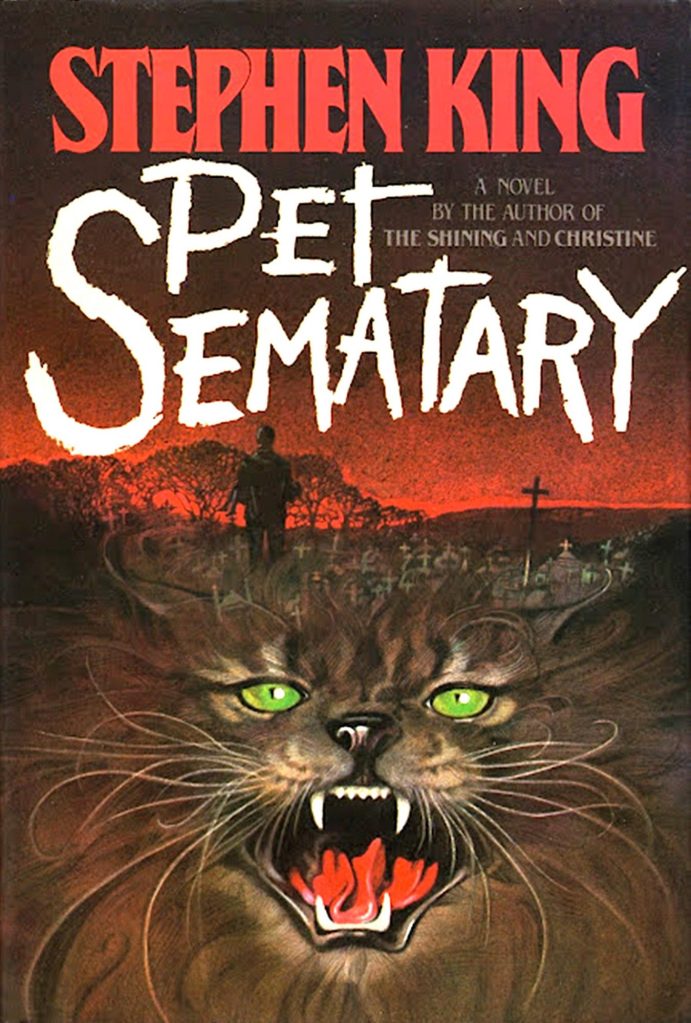
So
There was never going to be a “good” time to write this. I kept meaning to at least get a draft going then things kept happening. My dog had a mass on his heart and died…one of my oldest friends called me to tell me that she has cancer….my boyfriend suddenly had to put his dog down because of her health issues…and the odds are that the longer I waited on this that something else would happen and fry my emotions yet again.
This isn’t going to be a delve into Stephen King’s book versus the 1989 adaptation versus the 2019 adaptation. That’s an entire powerpoint presentation that can be saved for another day where popcorn and drinks will be provided.
This is about the core of the story that is Pet Sematary.
King already had a dozen novels under his belt by the time he published Pet Sematary in 1983. Often pulling inspiration from his own life experiences and emotions, Pet Sematary was no exception. In the late 1970s, King and his family moved to a rural area of Maine, complete with a road where semi-trucks roared by at all hours. As to be expected, many pets were killed in accidents and there was, in fact, a pet cemetery built in the woods. he misspelling that King used for the title of his novel was the same misspelling that the children had written on the sign.

Not long after the King family moved in, Stephen had found his daughter’s cat dead on the side of the road. Some time after that, King’s son, who was not even two years old at the time, was out flying a kite and ran towards the road. This event was directly shown in the story when the youngest member of the Creed family, Gage, runs into the road as he chases after his kite and is run over by a truck. While, thankfully, King’s son did not meet the same fate as Gage, he was left to wonder, “What if?” Noting in the introduction to the book that he still wondered, “Suppose I hadn’t caught him? Or suppose he had fallen in the middle of the road instead of on the edge of it?”
Looking at ourselves as a massive audience, not everyone is afraid of clowns or werewolves or a 1958 Plymouth Fury, but everyone can relate to the feeling of losing a person or a pet and thinking to themselves what they would give or what they would do to bring them back or just to see them one last time. It’s part of the arc of the grief process. The stages of grief are defined as denial, anger, bargaining, depression, and acceptance but the order and extent that people feel these emotions are more loosely defined.

Jud can tell the audience that, “Sometimes dead is better,” but your response to him could be to shout and cry that it’s bullshit. That having that loved one next to you again would be better. That having your pet curled up on the couch by you again would be better. That anything would be better. It’s the feelings of denial, anger, bargaining, depression, and acceptance all rolled into one daunting spiral.
King himself doesn’t deny the grueling darkness of the book, saying that, “It’s a terrible book—not in terms of the writing, but it just spirals down into darkness. It seems to be saying that nothing works and nothing is worth it, and I don’t really believe that.”
It’s a universal feeling in the worst way possible. It’s a part of life that everyone experiences and, you know what? It fucking sucks. That’s something else we can all agree on, I’m sure. This is where we can find catharsis in the horror genre and that’s really one of the greatest things about it.